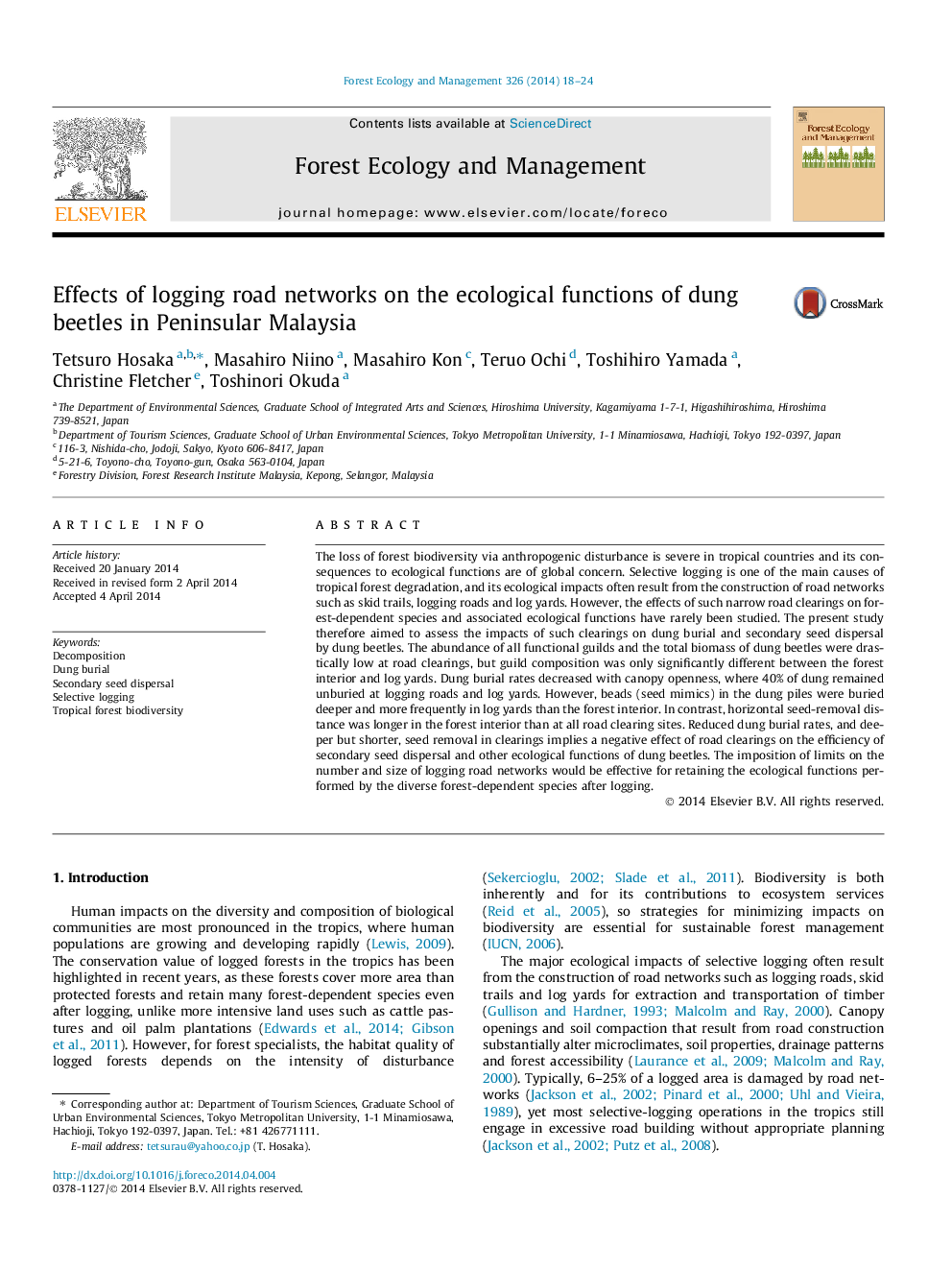| Article ID | Journal | Published Year | Pages | File Type |
|---|---|---|---|---|
| 6543501 | Forest Ecology and Management | 2014 | 7 Pages |
Abstract
The loss of forest biodiversity via anthropogenic disturbance is severe in tropical countries and its consequences to ecological functions are of global concern. Selective logging is one of the main causes of tropical forest degradation, and its ecological impacts often result from the construction of road networks such as skid trails, logging roads and log yards. However, the effects of such narrow road clearings on forest-dependent species and associated ecological functions have rarely been studied. The present study therefore aimed to assess the impacts of such clearings on dung burial and secondary seed dispersal by dung beetles. The abundance of all functional guilds and the total biomass of dung beetles were drastically low at road clearings, but guild composition was only significantly different between the forest interior and log yards. Dung burial rates decreased with canopy openness, where 40% of dung remained unburied at logging roads and log yards. However, beads (seed mimics) in the dung piles were buried deeper and more frequently in log yards than the forest interior. In contrast, horizontal seed-removal distance was longer in the forest interior than at all road clearing sites. Reduced dung burial rates, and deeper but shorter, seed removal in clearings implies a negative effect of road clearings on the efficiency of secondary seed dispersal and other ecological functions of dung beetles. The imposition of limits on the number and size of logging road networks would be effective for retaining the ecological functions performed by the diverse forest-dependent species after logging.
Keywords
Related Topics
Life Sciences
Agricultural and Biological Sciences
Ecology, Evolution, Behavior and Systematics
Authors
Tetsuro Hosaka, Masahiro Niino, Masahiro Kon, Teruo Ochi, Toshihiro Yamada, Christine Fletcher, Toshinori Okuda,
